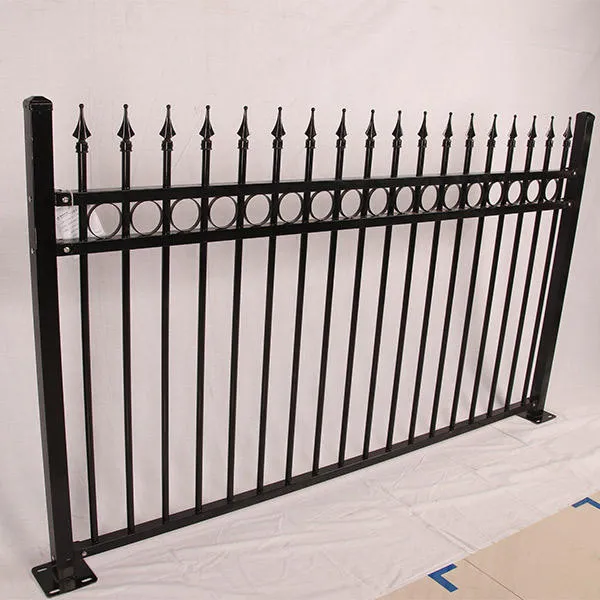Dec . 12, 2024 03:32 Back to list
hot dipped galvanized iron wire
Hot-Dipped Galvanized Iron Wire An Overview
Hot-dipped galvanized iron wire has gained significant importance in various industries due to its durability, corrosion resistance, and versatility. The process of hot-dipping involves coating iron wire with a layer of zinc, which provides a protective barrier against environmental elements. This article delves into the characteristics, applications, benefits, and environmental considerations of hot-dipped galvanized iron wire.
Production Process
The production of hot-dipped galvanized iron wire begins with the preparation of the wire itself, typically made from high-quality iron or steel with specified tensile strength. The wire is first cleaned to remove any impurities, such as oils, dirt, and rust, through processes like pickling. This cleaning is crucial as it allows for optimal zinc adhesion during the galvanizing process.
Once the wire is prepared, it is submerged in a molten bath of zinc at temperatures around 450 degrees Celsius. The wire is coated as it is withdrawn from the zinc bath, which creates a strong bond between the zinc and the metal. The thickness of the zinc coating can vary based on specific requirements, which can enhance the wire's performance in different environmental settings.
Characteristics
One of the standout features of hot-dipped galvanized iron wire is its exceptional resistance to rust and corrosion. The zinc coating acts as a sacrificial layer, protecting the underlying iron from oxidation and extending its lifespan significantly—often lasting more than 15 years in harsh environments. Additionally, the tensile strength of galvanized wire is high, making it suitable for various applications that require durability and reliability.
Another important characteristic is its flexibility, allowing it to be manufactured in various gauges and lengths. This adaptability makes it suitable for a range of applications, from construction to agriculture.
Applications
Hot-dipped galvanized iron wire is used in numerous applications across different sectors
1. Construction In the construction industry, this type of wire is commonly used for fencing, reinforcing concrete, and various structural applications where strength and corrosion resistance are paramount.
hot dipped galvanized iron wire

2. Agriculture Farmers use galvanized wire for livestock fencing, crop support, and trellises. Its durability is essential for managing and protecting crops and livestock.
3. Manufacturing In manufacturing, the wire is used for making wire products, including mesh, netting, and binding materials. Its resistance to corrosion ensures the longevity of manufactured goods.
4. Electrical Applications Galvanized wire is also suitable for making overhead power lines, where moisture and environmental exposure can lead to oxidation and wire degradation.
Benefits
The benefits of hot-dipped galvanized iron wire extend beyond its characteristics. Firstly, its longevity leads to reduced maintenance costs, making it an economical choice in the long run. The ability to customize coating thickness and wire gauge means it can be tailored to fit specific project needs, enhancing its usability across industries.
Moreover, the process of hot-dipping is relatively environmentally friendly. Zinc is one of the most abundant metals on Earth, and the galvanizing process generates minimal waste. The long life of galvanized products also reduces the frequency of replacement, contributing to sustainability efforts.
Environmental Considerations
While hot-dipped galvanized iron wire is a robust and versatile material, it is essential to consider its environmental impact. The production process, especially the melting of zinc and the energy consumption involved, can contribute to carbon emissions. Industry initiatives focus on improving galvanizing techniques and increasing recycling rates for galvanized materials, aiming for a more sustainable approach in the long run.
Conclusion
In conclusion, hot-dipped galvanized iron wire serves as a fundamental material across various industries due to its strength, corrosion resistance, and adaptability. As industries continue to seek durable solutions for construction, agriculture, and manufacturing, the importance of this galvanized wire only stands to increase. With growing environmental concerns, advancements in production processes will further enhance its sustainability profile, ensuring that hot-dipped galvanized iron wire remains a preferred choice for both current and future applications.
-
Web Scraping-NIST|Data Extraction&Automation
NewsJul.23,2025
-
Web Scraping-NIST|Data Extraction&Automation
NewsJul.21,2025
-
Galvanized Steel Chain Link Fence - Anping County Puersen|Durable Security Solution&Cost-Effective Fencing
NewsJul.21,2025
-
Galvanized Steel Chain Link Fence - Anping County Puersen Hardware Wire Mesh Products Co.,Ltd
NewsJul.21,2025
-
Galvanized Steel Chain Link Fences-Anping County Puersen Hardware Wire Mesh Products Co.,Ltd|Durable Corrosion-Resistant Fencing&Cost-Effective Security Solutions
NewsJul.21,2025
-
Diamond Steel Grating - Anping County Puersen Hardware Wire Mesh Products Co., Ltd.|Durable Industrial Solutions&Customized Steel Grating
NewsJul.21,2025

